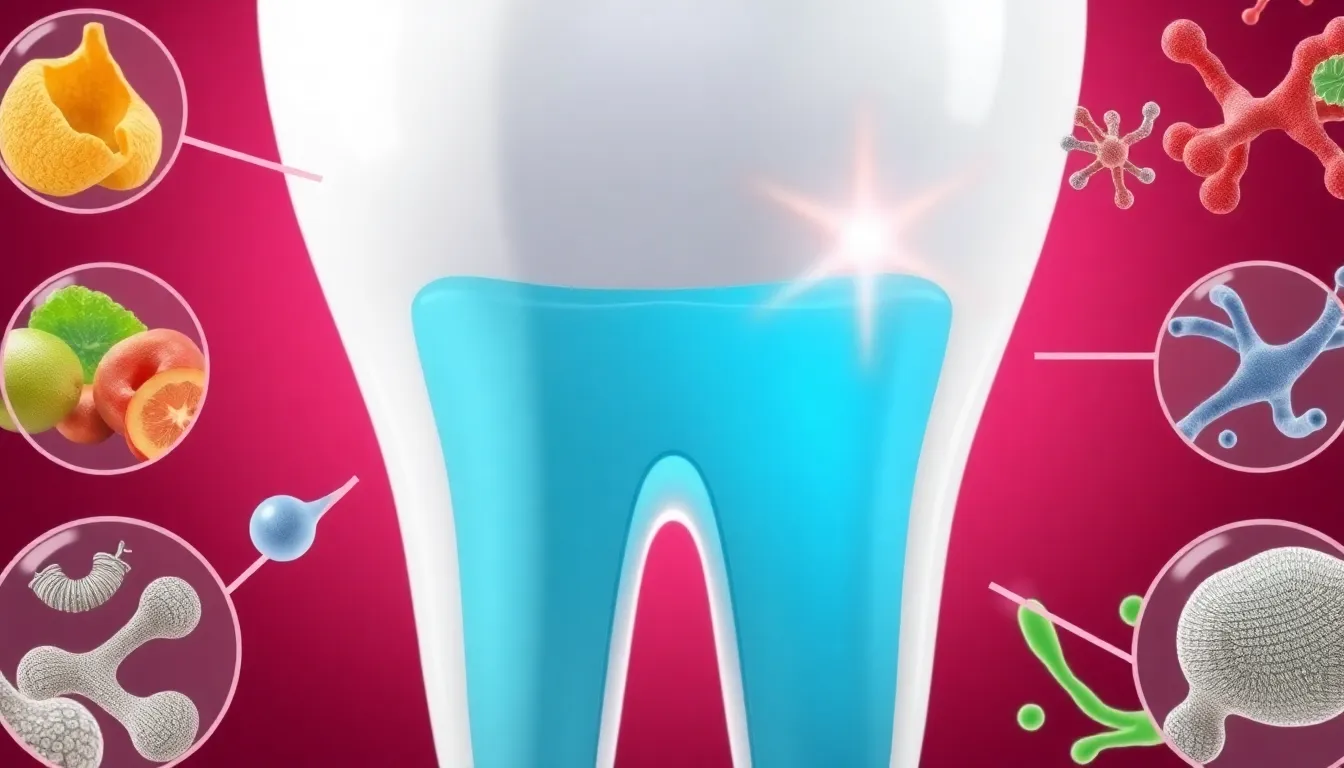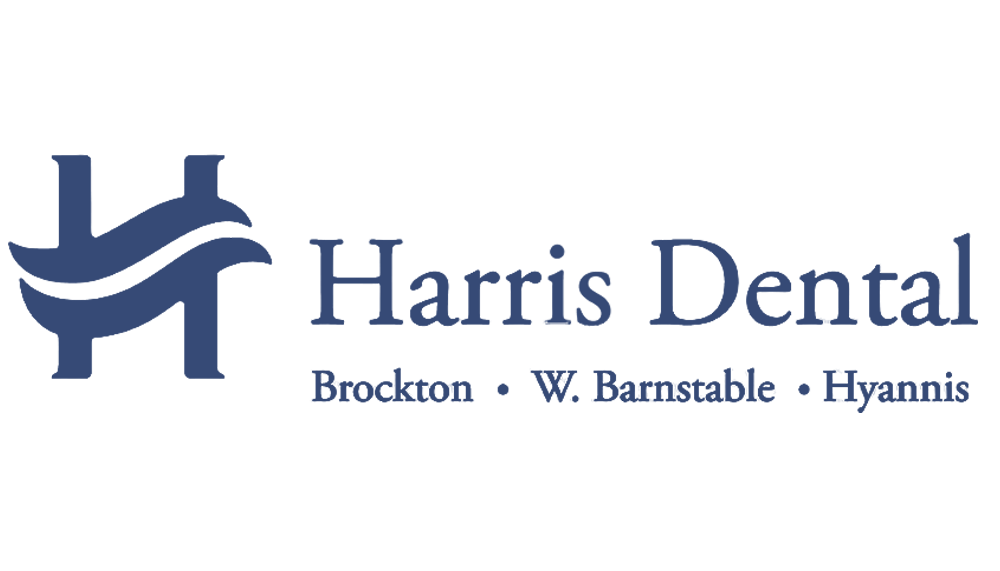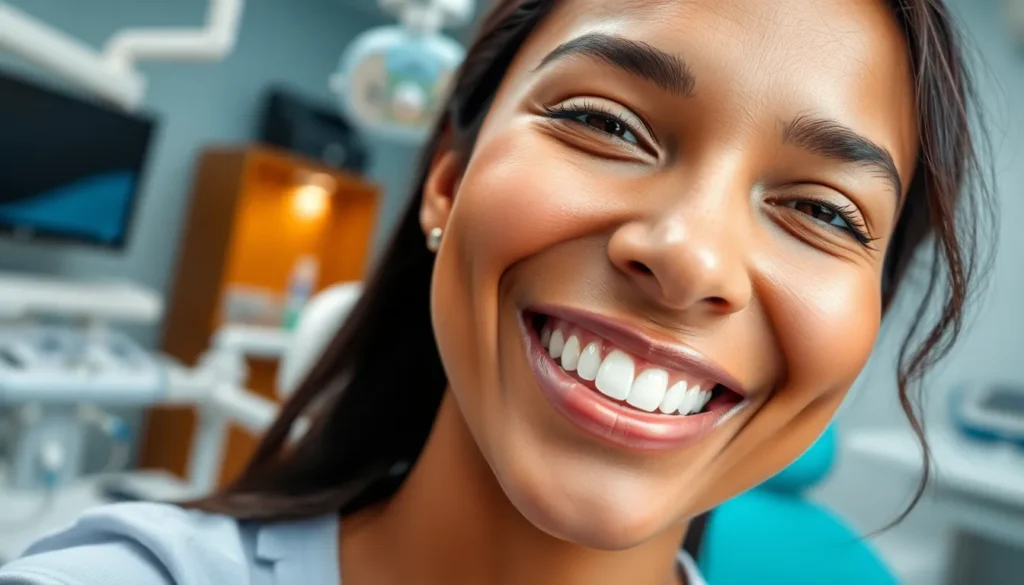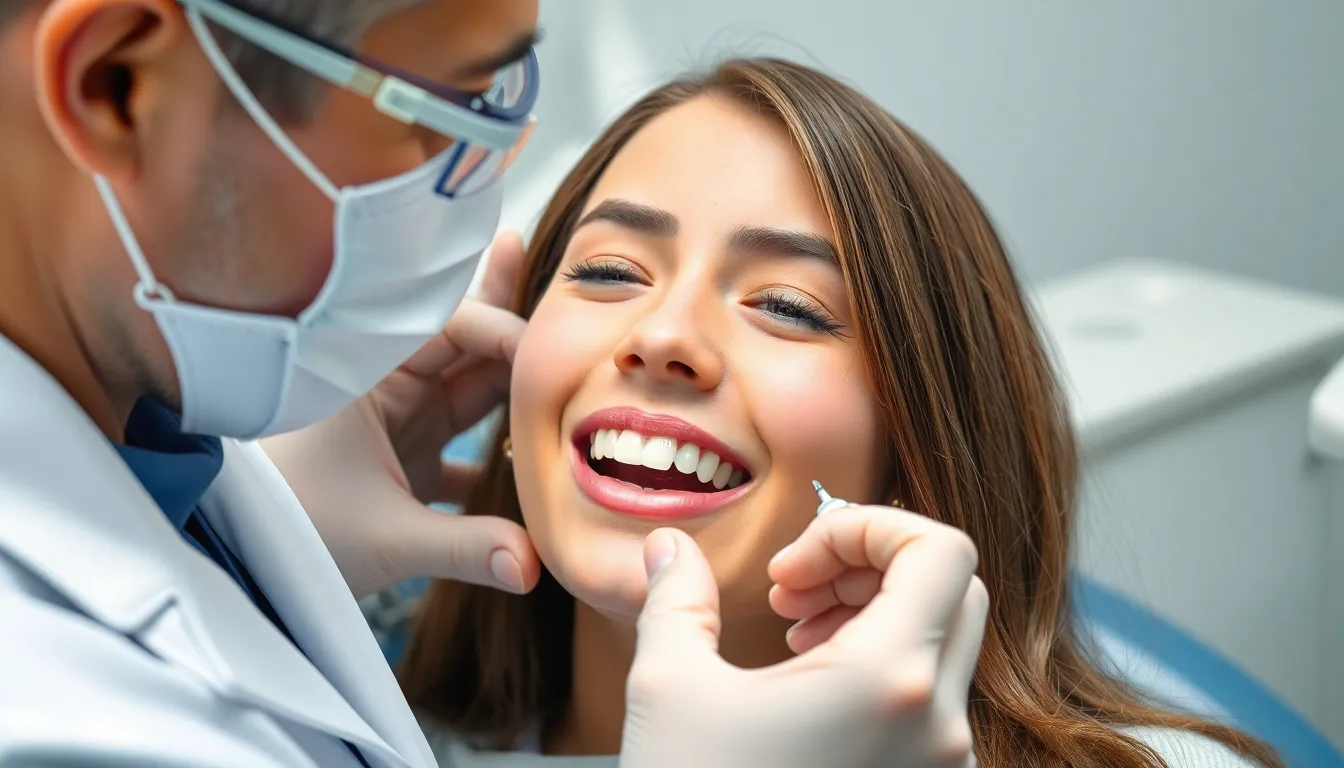Does bleaching teeth ruin enamel? It’s a question that might be keeping you from achieving that picture-perfect smile you’ve been dreaming of. With countless whitening products promising brighter teeth, it’s natural to wonder about potential damage to your precious enamel.
The relationship between teeth whitening and enamel health isn’t as straightforward as you might think. While teeth bleaching has become increasingly popular, concerns about its safety continue to circulate. Many people worry that the chemicals used in whitening treatments might wear away the protective enamel layer, leading to sensitivity and other dental problems.
Understanding Teeth Bleaching: What It Is and How It Works
Teeth bleaching refers to any procedure that lightens the color of teeth using chemical agents. These whitening treatments break down stains and discolorations on tooth surfaces through oxidation processes. Many patients, like Sarah who visited our office last month, come in with yellowed teeth from years of coffee consumption and leave with smiles several shades brighter.
Common Teeth Whitening Agents
Hydrogen peroxide serves as the primary active ingredient in most professional bleaching products, typically in concentrations of 15-38%. Carbamide peroxide, another popular whitening agent, breaks down into hydrogen peroxide and urea when applied to teeth. Over-the-counter products often contain lower concentrations, ranging from 3-10% hydrogen peroxide or 10-22% carbamide peroxide for safety reasons. These chemicals penetrate the porous enamel to reach stain molecules embedded within the tooth structure.
Professional vs. At-Home Bleaching Methods
Professional in-office bleaching delivers dramatic results in a single 60-90 minute appointment using high-concentration peroxide gels activated by special lights or lasers. At-home professional kits prescribed by dentists feature custom-fitted trays with moderate-strength peroxide answers worn for 30 minutes to overnight for 1-2 weeks. Over-the-counter options include strips, trays, pens, and toothpastes containing lower concentrations of bleaching agents requiring consistent use over extended periods.
The Science Behind Tooth Enamel

Tooth enamel serves as your teeth’s first line of defense against damage and decay. Understanding its composition and vulnerability factors helps explain how teeth whitening treatments interact with this crucial protective layer.
The Structure and Function of Enamel
Enamel forms the hard, outermost layer of your teeth, primarily composed of mineralized hydroxyapatite crystals. This tough exterior acts as a durable shield that protects the softer dentin and sensitive pulp inside your teeth from physical damage and chemical erosion. As the most mineralized substance in your body, enamel creates a barrier against temperature extremes, acidic foods, and bacterial attacks. Its translucent nature allows the underlying dentin’s color to show through, which largely determines your natural tooth shade. Even though its remarkable strength, enamel lacks living cells, meaning it can’t regenerate naturally once damaged.
How Enamel Can Be Damaged
Enamel faces many threats in everyday life that can compromise its integrity. Acidic foods and beverages erode the mineral structure over time, weakening enamel’s protective capabilities. Bacterial plaque produces acids that demineralize enamel, potentially leading to cavities when left unchecked. Physical trauma from teeth grinding, improper brushing techniques, or using teeth as tools creates microscopic cracks and wear patterns. Chemical agents, including some oral care products with improper pH levels, may soften enamel temporarily. Age-related thinning occurs naturally as decades of use gradually wear down this protective layer. Environmental factors such as excessive fluoride exposure during tooth development can also affect enamel formation. Recognizing these damage sources helps contextualize how whitening treatments interact with enamel’s structural integrity.
Does Teeth Bleaching Damage Enamel?

Teeth bleaching does affect enamel, but the extent and permanence of these effects depend on several factors including the bleaching method, concentration of active ingredients, and aftercare practices. Research has documented exact changes to enamel structure following bleaching treatments, though many effects appear to be temporary with proper care.
What Research Studies Show
Scientific evidence demonstrates that bleaching agents, especially peroxide-based products, alter enamel surface properties in measurable ways. Electron microscopy reveals that peroxide exposure disrupts the hydroxyapatite crystal structure in enamel, creating visible erosion patterns. Studies have documented a decrease in enamel microhardness after bleaching treatments, essentially making your teeth temporarily softer and more vulnerable. Research also confirms increased surface roughness and porosity following whitening procedures, with morphological changes including the loss of aprismatic layers, formation of craters, and development of irregular enamel grooves. These alterations can potentially make teeth more susceptible to staining and wear immediately after treatment. Fortunately, remineralizing agents applied post-bleaching have shown promising results in restoring hardness lost during the whitening process, suggesting many effects aren’t permanent.
Short-term vs. Long-term Effects
The immediate impact of bleaching on enamel includes reduced hardness and increased roughness that peaks within the first 24-48 hours after treatment. Your teeth become temporarily more vulnerable to wear, staining, and sensitivity during this period as the peroxide’s oxidative effects alter the enamel surface structure. Many patients experience heightened sensitivity to temperature extremes and certain foods, confirming these short-term changes to enamel integrity.
Long-term outcomes appear much more favorable when proper protocols are followed. Professional supervision combined with appropriate post-bleaching care significantly minimizes permanent enamel damage. Remineralization treatments containing fluoride or calcium phosphate compounds help restore enamel strength and repair microscopic defects created during the bleaching process. Adhering to recommended treatment intervals rather than continuous bleaching prevents cumulative damage to enamel structure.
Common Bleaching Methods and Their Impact on Enamel

Different teeth whitening approaches vary in their potential effects on your dental enamel. Understanding these methods helps you make informed decisions about which option best preserves your enamel while achieving the desired whitening results.
Professional Dental Whitening
Professional whitening treatments use peroxide-based gels in controlled environments with proper supervision. Dentists carefully manage the concentration and exposure time of these whitening agents to ensure optimal results without compromising enamel integrity. Research confirms that professional bleaching doesn’t directly damage enamel structure when performed correctly. Your teeth might experience temporary sensitivity during treatment, but the enamel’s hardness typically remains intact and fully recovers after the procedure ends. These supervised treatments are specifically designed to enhance your natural tooth color without creating an artificial appearance or causing extreme discomfort.
Dr. Todd B. Harris notes, “In my practice, I’ve seen hundreds of patients achieve important whitening results with professional treatments without any long-term enamel damage. The key is proper application and monitoring throughout the process.”
At-Home Whitening Kits
At-home whitening products generally contain lower concentrations of bleaching agents compared to professional options, making them safer for unsupervised use. These kits present a higher risk of enamel issues primarily when misused or overused beyond recommended guidelines. Excessive application can irritate your teeth and temporarily soften enamel, potentially leading to increased sensitivity. Though this doesn’t typically cause permanent enamel loss, it can indirectly weaken your enamel structure over time. Many over-the-counter whitening toothpastes contain abrasive ingredients that may mechanically wear down enamel through frequent use.
One patient shared her experience: “I used an at-home whitening kit every day for three weeks straight, ignoring the twice-weekly recommendation. My teeth became so sensitive I couldn’t drink cold water, and my dentist explained I had temporarily compromised my enamel. After taking a break and following proper instructions, I achieved the results I wanted without the sensitivity.”
Natural Whitening Alternatives
Natural whitening methods like baking soda and activated charcoal lack standardization and scientific backing compared to commercial products. These alternatives often rely on abrasive action rather than chemical bleaching to remove surface stains. Your enamel faces greater risk from abrasion with these methods than from chemical damage itself. Regular use of highly abrasive natural whiteners can gradually wear down enamel, potentially leading to increased sensitivity and vulnerability to staining. Natural doesn’t always mean safer—the mechanical action of these products on your enamel can cause cumulative damage that’s difficult to reverse.
| Whitening Method | Primary Mechanism | Enamel Impact | Risk Level |
|---|---|---|---|
| Professional Dental | Controlled peroxide oxidation | Minimal, temporary sensitivity | Low |
| At-Home Kits | Lower-concentration peroxide | Potential softening if overused | Moderate |
| Natural Alternatives | Mechanical abrasion | Possible enamel wear over time | Moderate to High |
The most crucial factor in preserving enamel health during whitening isn’t necessarily which method you choose, but rather how you follow the recommended usage guidelines. Whitening agents primarily work by oxidizing stains within your enamel, not by stripping the enamel itself. Temporary enamel softening observed in studies proves reversible with proper care, allowing enzyme hardness to return to normal after treatment.
How to Safely Whiten Teeth While Protecting Enamel

Teeth whitening can be performed safely without compromising enamel integrity when following proper protocols. Professional guidance and appropriate product selection are essential for maintaining dental health while achieving a brighter smile.
Best Practices for Teeth Bleaching
Professional whitening treatments supervised by dentists offer the safest approach to teeth bleaching. These treatments use carefully controlled concentrations of whitening agents that effectively lighten teeth without damaging the enamel structure. Dentists customize treatment plans based on your exact dental condition and desired results, minimizing risks associated with over-bleaching.
Over-the-counter whitening products require careful attention to manufacturer instructions. Excessive or too frequent use of these products can irritate teeth and indirectly weaken enamel over time. Limiting whitening sessions to recommended intervals allows your teeth to recover between treatments.
Abrasive whitening toothpastes may seem convenient but often contain particles that can wear down enamel with prolonged use. Choosing non-abrasive formulations helps preserve your enamel’s integrity while still removing surface stains.
Regular dental check-ups before and during whitening treatments help identify potential enamel issues early. Your dentist can assess whether your teeth are suitable candidates for whitening and recommend appropriate alternatives if needed.
Enamel-Strengthening Strategies
Fluoride-containing products play a crucial role in enamel protection during whitening. Fluoride helps remineralize enamel by attracting calcium and phosphate ions to the tooth surface, strengthening areas that may have been temporarily softened by bleaching agents.
Timing your oral hygiene routine properly contributes to enamel preservation. Avoid brushing immediately after whitening sessions when enamel might be more vulnerable to abrasion. Waiting at least 30 minutes allows your enamel to reharden before mechanical cleaning.
Dietary choices significantly impact enamel health during whitening treatments. Staying hydrated promotes saliva production, which naturally remineralizes teeth. Avoiding acidic foods and beverages prevents further enamel erosion when teeth might be more susceptible after bleaching.
Calcium-rich foods support enamel strength throughout the whitening process. Incorporating dairy products, leafy greens, and fortified foods into your diet provides essential minerals that contribute to enamel remineralization.
Using desensitizing toothpastes before and during whitening treatments can help minimize sensitivity. These formulations often contain compounds that block the tubules in dentin, reducing nerve irritation that sometimes occurs during bleaching without indicating actual enamel damage.
When to Avoid Teeth Bleaching

Existing Dental Conditions
Teeth bleaching isn’t suitable for everyone, especially those with pre-existing dental issues. Exposed roots from gum recession make teeth particularly vulnerable to the chemicals in whitening products, potentially increasing sensitivity and discomfort. Patients with important enamel erosion should also avoid bleaching treatments as the peroxide can penetrate more deeply into teeth with compromised enamel, causing heightened sensitivity and potential damage. Active gum disease creates another contraindication, as bleaching agents may irritate already inflamed gum tissue and exacerbate the condition.
Pregnancy and Nursing
During pregnancy and breastfeeding periods, dental professionals typically recommend postponing teeth whitening treatments. Though limited research exists on the direct effects of peroxide-based whitening agents on developing fetuses or nursing infants, many dentists advise caution as a preventive measure. The chemicals in whitening products, while generally safe for most adults, haven’t been extensively studied in these exact populations. Pregnant women often experience increased gum sensitivity, making teeth bleaching potentially more uncomfortable during this time.
Age Considerations
Children and young teenagers aren’t appropriate candidates for teeth bleaching. Their dental structures are still developing, with teeth that contain larger pulp chambers making them more susceptible to sensitivity and irritation from whitening chemicals. The American Academy of Pediatric Dentistry advises against cosmetic bleaching for patients under 15 years old. Elderly individuals with important enamel thinning might also find bleaching treatments too harsh for their teeth, as age-related changes can increase vulnerability to the effects of peroxide.
Exact Dental Work
Certain types of dental restorations don’t respond to bleaching treatments. Porcelain crowns, veneers, and composite fillings maintain their original color regardless of whitening attempts. This limitation creates a potential aesthetic problem where natural teeth may whiten while restorations remain unchanged, resulting in mismatched tooth coloration. Dr. Todd B. Harris notes, “I’ve had patients disappointed after whitening because their dental work suddenly became more noticeable against their brighter natural teeth. It’s crucial to discuss these limitations before starting any whitening regimen.”
Severe Tooth Sensitivity
Individuals experiencing important tooth sensitivity should approach bleaching with caution or avoid it entirely. Peroxide-based whitening agents temporarily soften enamel and can penetrate to the dentin layer, exacerbating existing sensitivity issues. A recent study indicated that patients with moderate to severe sensitivity reported increased discomfort lasting up to 48 hours after professional bleaching treatments. Alternatives like microabrasion or veneers might prove more comfortable options for those with pronounced sensitivity concerns.
Unrealistic Expectations
Patients with extremely discolored teeth from tetracycline staining, fluorosis, or important intrinsic discoloration often experience disappointing results from conventional bleaching. These types of stains typically respond poorly to peroxide-based treatments, requiring more intensive interventions. Individuals seeking dramatic, immediate results might face frustration with the gradual nature of most whitening processes. Understanding the limitations of bleaching treatments helps prevent disappointment and unnecessary exposure to potential enamel-softening agents.
Conclusion
Teeth bleaching can brighten your smile without permanent enamel damage when done correctly. While temporary changes to enamel may occur professional supervision and proper aftercare significantly reduce risks.
The key is moderation and following recommended guidelines whether you choose professional treatments or at-home options. Remember that certain conditions like existing dental problems pregnancy or severe sensitivity make bleaching inadvisable.
For optimal results strengthen your enamel with fluoride products calcium-rich foods and proper hydration. Schedule regular dental check-ups to monitor your oral health throughout the whitening process.
With informed choices and appropriate precautions you can achieve a whiter smile while keeping your enamel healthy and strong for years to come.
Frequently Asked Questions
Can teeth bleaching damage tooth enamel?
While teeth bleaching can temporarily affect enamel, causing reduced hardness and increased roughness, these effects are generally reversible. Damage is minimal when following proper protocols, using appropriate concentrations of whitening agents, and practicing good aftercare. Professional treatments are safer than DIY methods, as they use controlled amounts of peroxide under supervision.
How does teeth bleaching work?
Teeth bleaching works through chemical agents, primarily hydrogen peroxide or carbamide peroxide, that penetrate the enamel. These agents break down stain-causing compounds through oxidation reactions, lightening the appearance of teeth. The process doesn’t remove enamel but targets the organic molecules that cause discoloration within the tooth structure.
Is professional teeth whitening safer than at-home kits?
Yes, professional teeth whitening is generally safer than at-home kits. Dentists use controlled concentrations of whitening agents, customize treatments to your dental health, and monitor the process to prevent overexposure. At-home kits can be safe when used as directed, but improper use increases the risk of enamel damage and gum irritation.
Are natural whitening methods better for enamel?
Not necessarily. Many natural whitening methods like baking soda and activated charcoal are abrasive and can gradually wear down enamel with repeated use. While they may seem gentler, their cumulative effect can be more damaging than properly administered peroxide-based treatments, which target stains through chemical reactions rather than abrasion.
How can I protect my enamel during teeth whitening?
Protect your enamel by consulting a dentist before whitening, following product instructions precisely, using fluoride products to remineralize teeth, avoiding brushing immediately after treatment, and limiting acidic foods and drinks. Choose non-abrasive toothpaste, stay hydrated, consume calcium-rich foods, and consider using desensitizing products before and after whitening.
Who should avoid teeth bleaching treatments?
Avoid teeth bleaching if you have exposed tooth roots, significant enamel erosion, active gum disease, or severe tooth sensitivity. Pregnant or nursing women should postpone whitening due to limited research on safety. Children under 16, elderly individuals with thinned enamel, and people with extensive dental restorations (which won’t respond to bleaching) should also reconsider whitening treatments.
How long do teeth whitening results last?
Teeth whitening results typically last between 6 months and 3 years, depending on your oral hygiene, lifestyle habits, and the whitening method used. Consuming staining substances like coffee, red wine, and tobacco will shorten results’ longevity. Periodic touch-up treatments and good oral hygiene can help maintain your brighter smile for longer.
Can whitening treatments fix all types of tooth discoloration?
No, whitening treatments cannot fix all types of discoloration. They work best on extrinsic stains from food, drinks, and tobacco. Intrinsic discoloration from medications (like tetracycline), excessive fluoride exposure, or trauma may not respond well to standard bleaching. Some gray or brown discolorations might require alternative cosmetic treatments like veneers for effective improvement.







